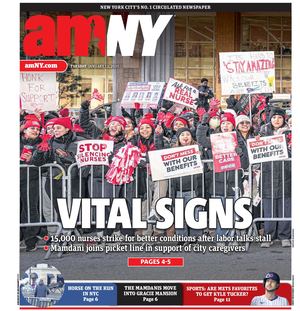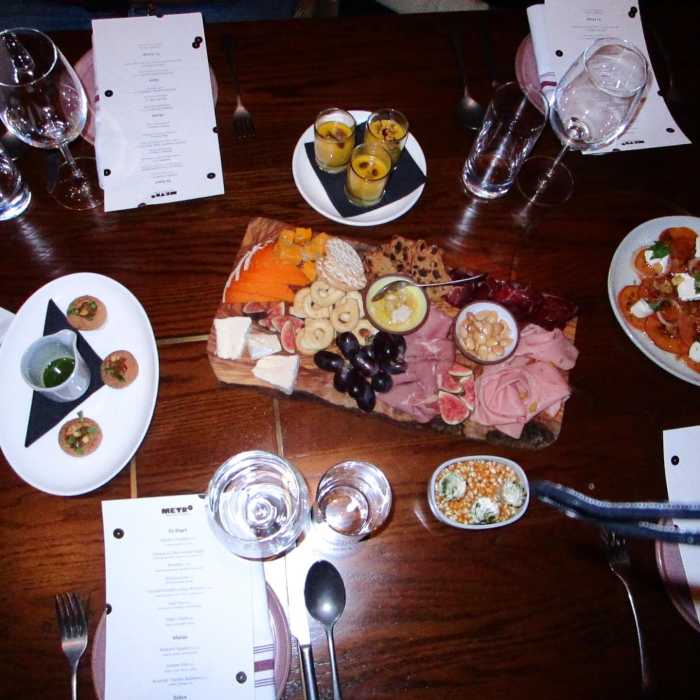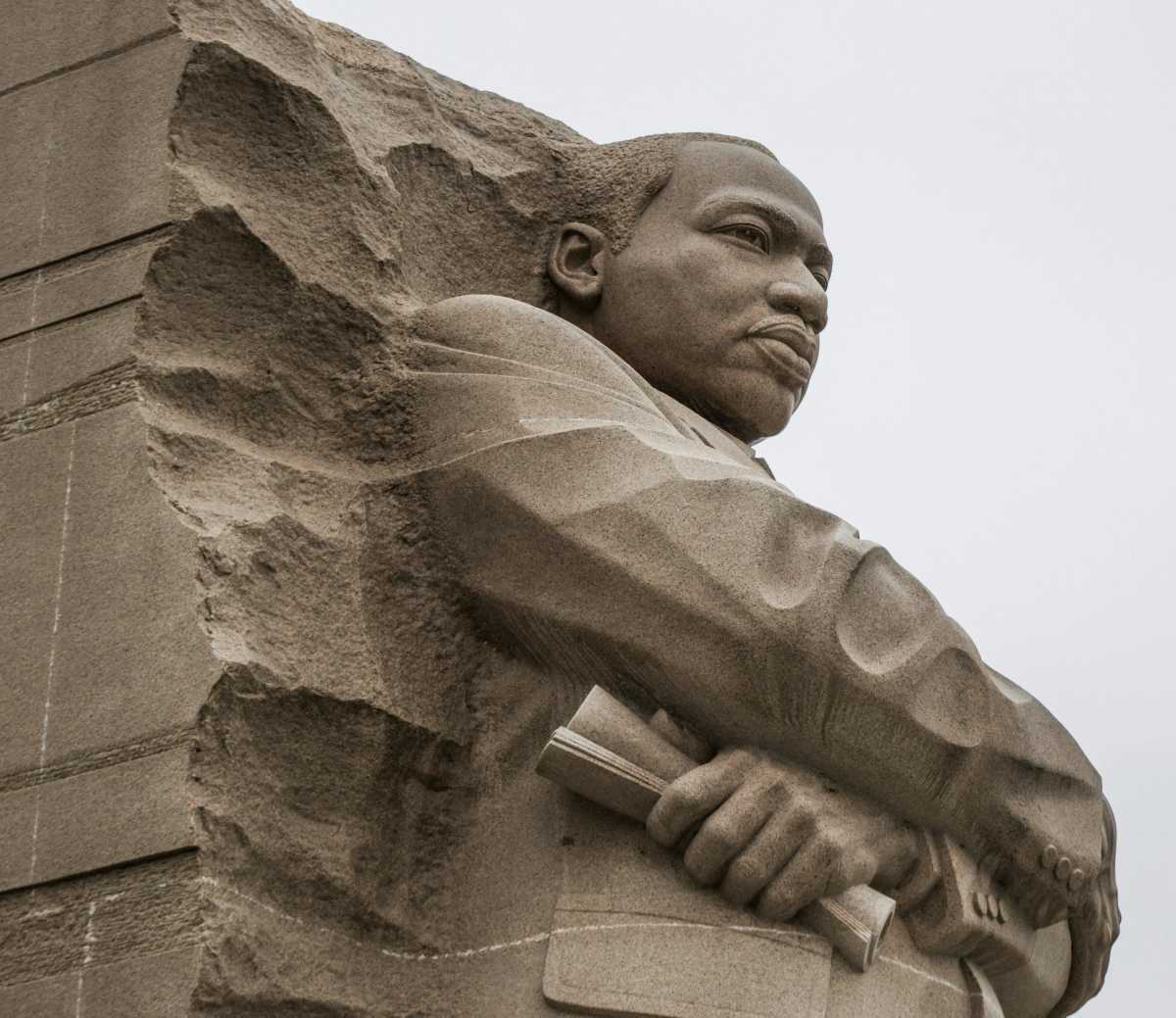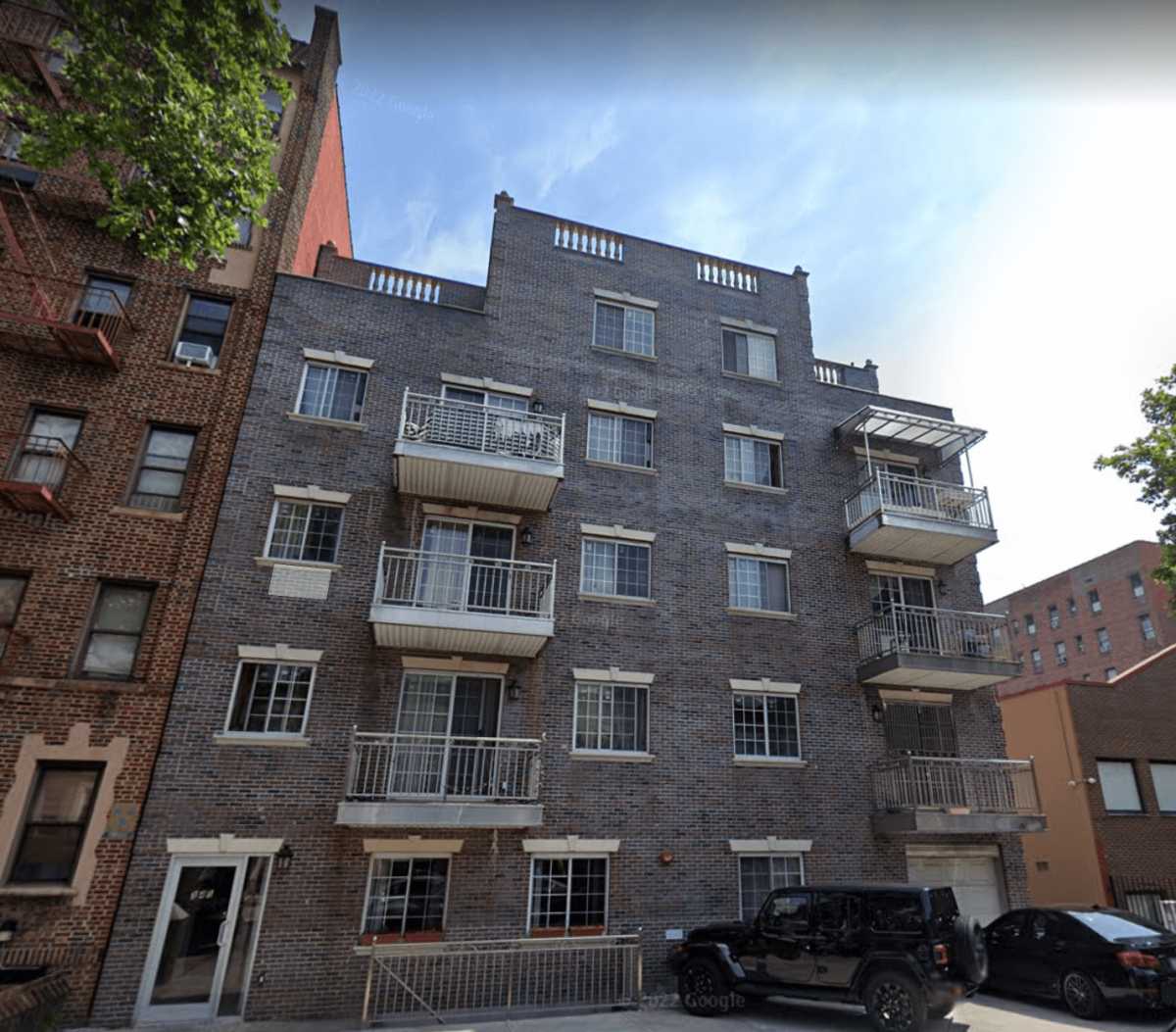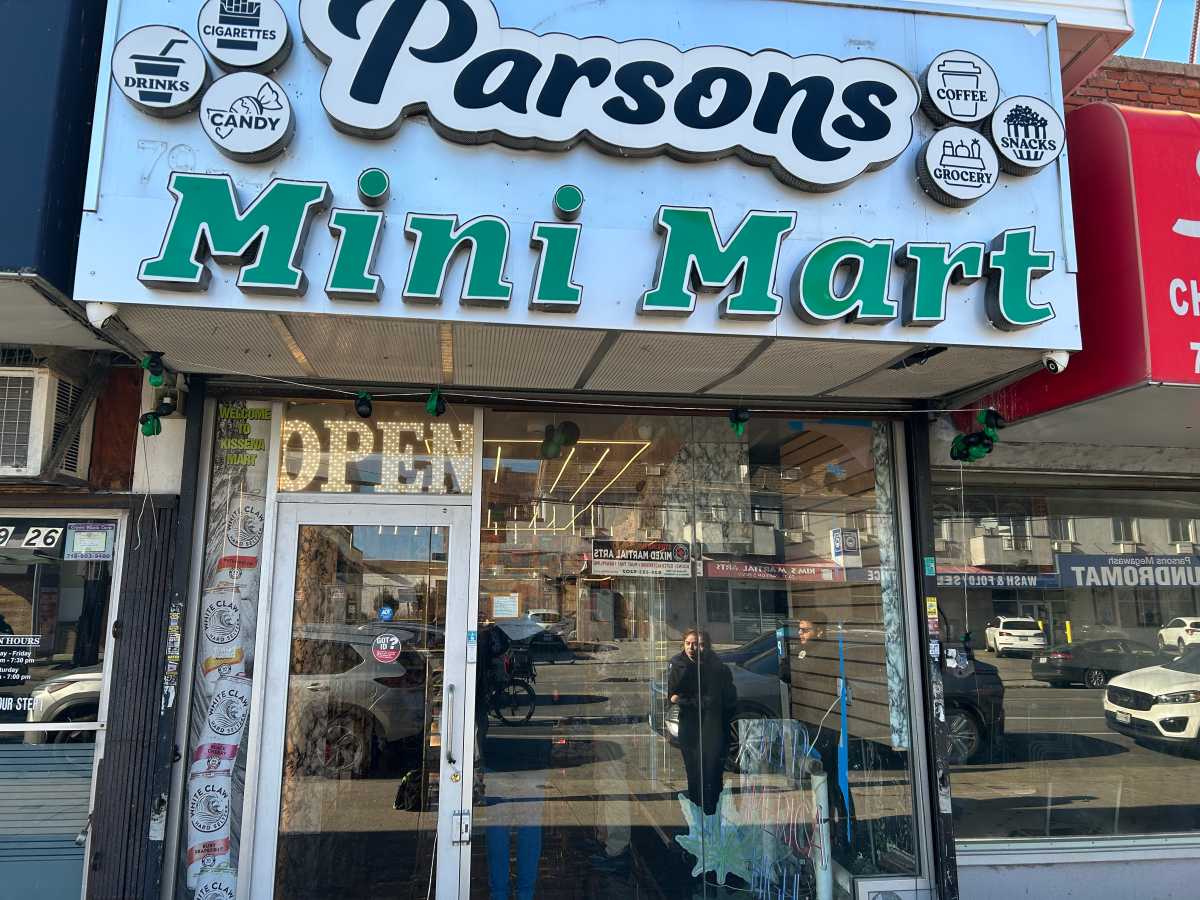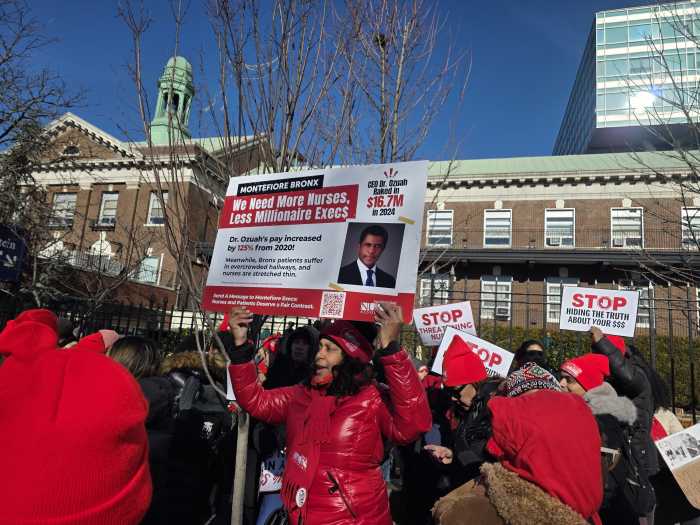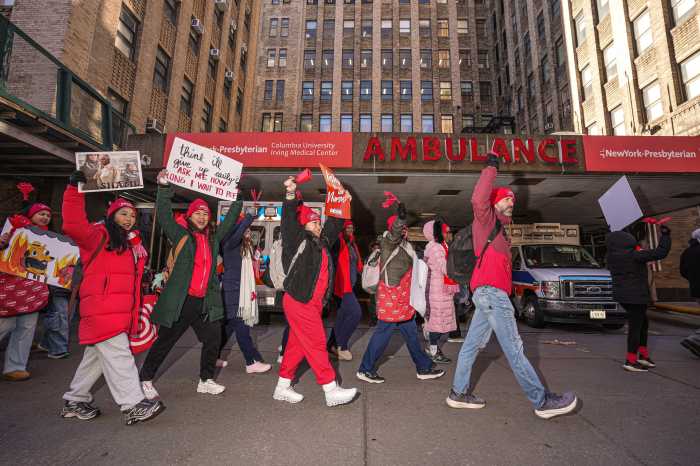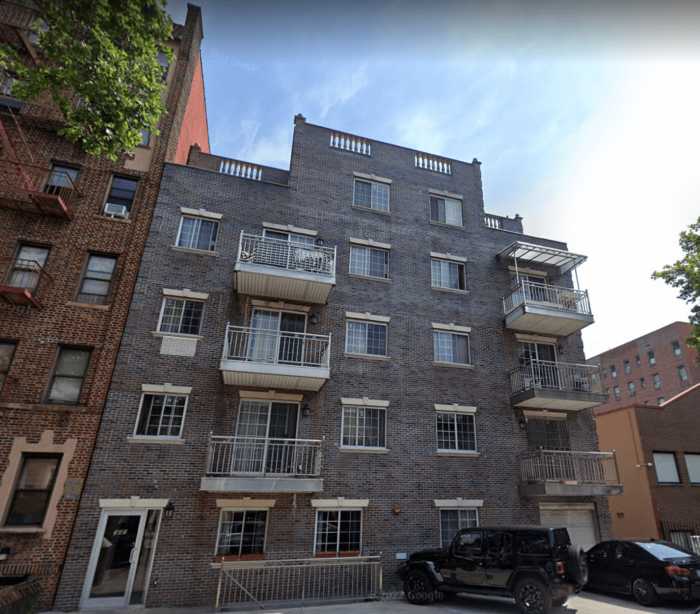The “animals” were trapped, trapped, trapped in a prison-turned-production studio on Staten Island for the sixth season of “Orange Is the New Black.”
“It really does make you feel like an animal, like our theme song says,” actress Danielle Brooks says of filming at a shuttered prison where reminders of its former inhabitants are etched in the walls.
The Netflix Original transformed former men’s prison Arthur Kill Correctional Facility into Litchfield Max for the series’ most recent season, after spending the past five years filming at New York’s Rockland Children’s Psychiatric Center and Long Island’s Riverhead Correctional Facility.
“To be in a new space, as an actress, we felt like our characters,” says Brooks, who’s portrayed Taystee for the past six years. “It was like, ‘Whoa, what happened here? Why are we moving?’”
The fifth season finale gave the production team no choice but to jump ship from the upstate New York location as the inmates left fictional Litchfield behind.
Most of the latest season’s maximum-security scenes involving the rival cell blocks — C, D and Florida — were filmed on soundstages at Kaufman Astoria Studios in Queens. But some major moments went down on the grounds of Arthur Kill, from the infamous kickball games (of past and present), to shots in the SHU and Piper’s long-awaited release.
The prison, a minimum security facility which closed in 2011, was opened the grounds to film crews (like that of “Blindspot” and “Ocean’s 8”) in 2017 after being purchased by Broadway Stages for $7 million.
The production company saw the shuttered facility as a way to keep film shoots within the city, without having to recreate prison cells at studios. It foresees the creation of more than 1,300 on-site jobs and 350 construction jobs within its first five years.
“Because ‘Orange Is the New Black’ became a really huge hit, a lot more people wanted that authenticity when filming,” explains spokesman Warren H. Cohn, who represents Broadway Stages. “They want that metal-to-metal crash of a door closing.”

Broadway Stages has vowed to invest $20 million into the renovation of the 67-acre, 400-cell prison, by way of paint jobs, soundstages and other minor fixes, but much of the property remains genuine. Posted guard notices and messages etched into the walls by inmates can still be spotted in areas that haven’t been retouched.
“It always helps as an actress to have reality marry the fiction you’re playing so you can draw on that,” says Natasha Lyonne, aka Nicky. “It definitely struck me; the interior of the facility was so striking, so much more boxed in and quite beautiful in terms of production design, but it’s claustrophobic and a lot less free reign than (the “OITNB” inmates) had in Litchfield.”
“OITNB” scenes were filmed inside Arthur Kill’s Catholic Chapel, main visitor entrance, outdoor field and original Special Housing Unit (SHU), which included access to dozens of cells only slightly larger than your apartment bathroom. Dimly lit cells are half covered in shadows, with only a narrow metal cot, toilet seat and scratched mirror inside.
“This season, Taystee spent a lot of time having conversation through guards or getting notes passed through doors. Sometimes there’d be 10, 11-hour days in the cell with chains on my hand,” Brooks says.
Because the Litchfield women were sent to maximum security, after the season five riot, the actresses filmed several scenes solo. They spent much of the season behind closed cell doors, finding ways to communicate through books, vents and occasional miming.

“Sometimes I’d sleep in my cot as we filmed … it’s very important to get in some of that in for integrity and method acting,” Lyonne says, joking about how she passed the time in solitary confinement.
She continues: “In there, you really are just staring at the ceiling. I do remember moments where you’re just sitting there and there’s no cellphones, no books, obviously. The most torturous part is being alone with one’s thoughts, regrets and fears. The show is such an intense reminder of the realities of how unjust the prison industrial complex really is.”
For Brooks, the authenticity didn’t end with her immediate surroundings. It toppled over into the props, too.
A script that placed her as a target in the death of a corrections officer left her character quite literally chained up this season, wearing arm, leg and waist chains for the first time.
“I’ve worn handcuffs, but haven’t been fully chained up. It’s a new experience. They hurt!” Brooks says. “Oh my gosh. It’s so painful even if you don’t have them on the tightest adjustment.”
“OITNB” has been picked up for its seventh season, and a release date has not yet been announced.
